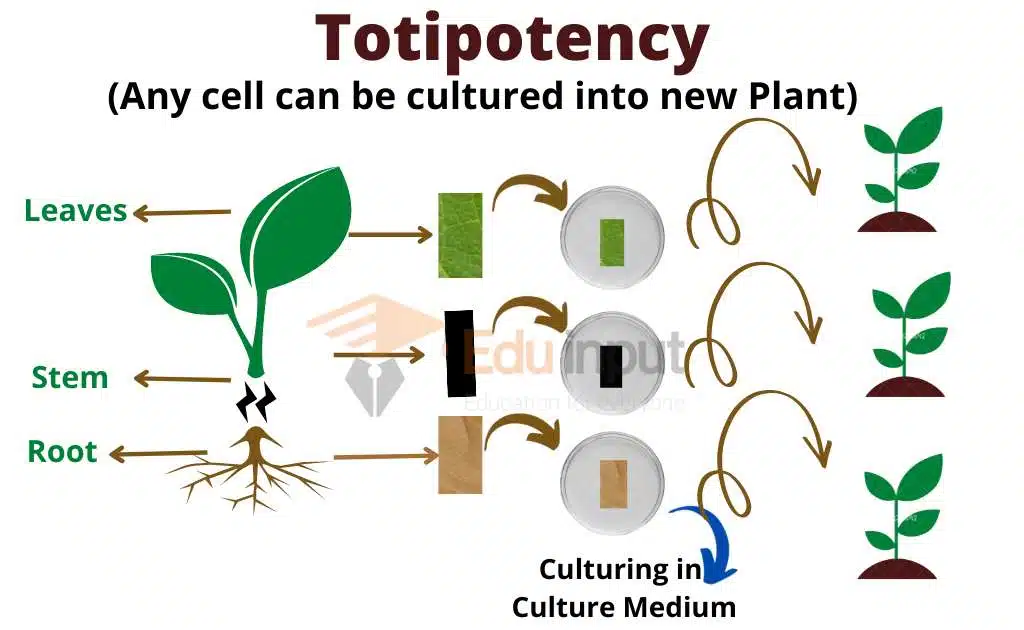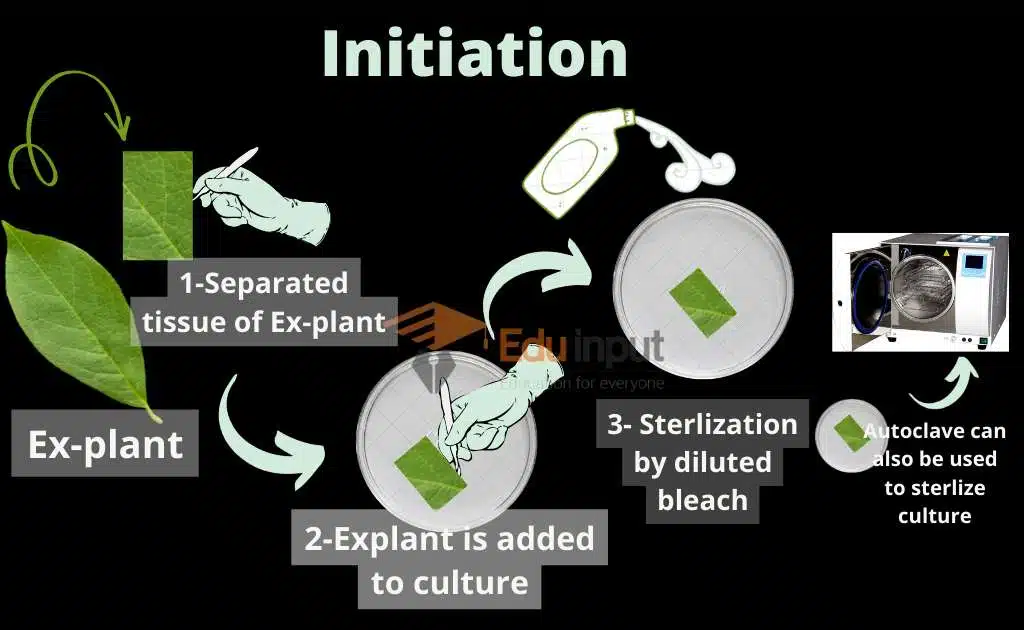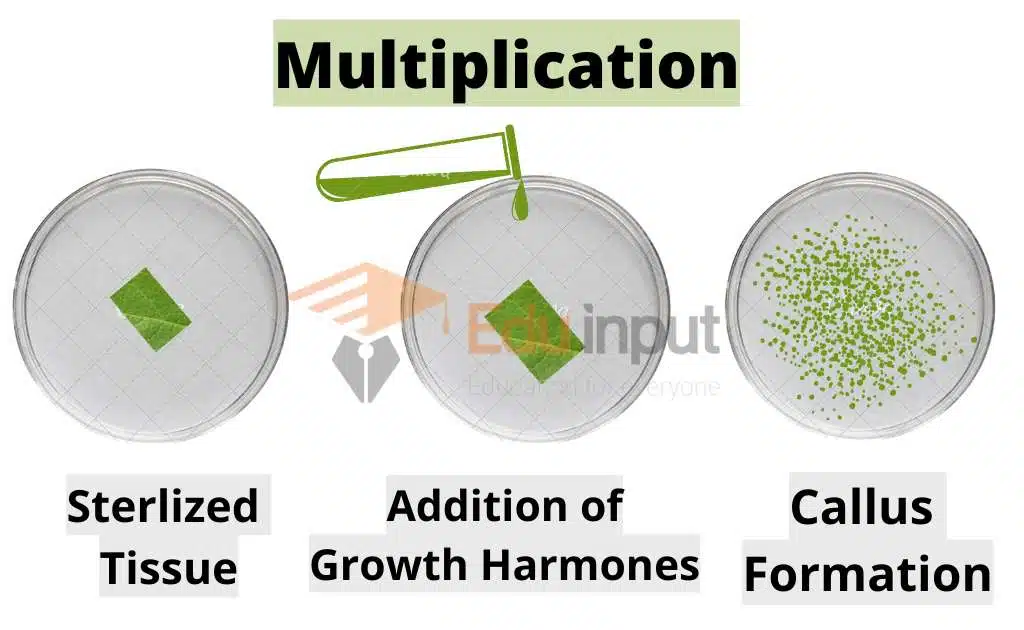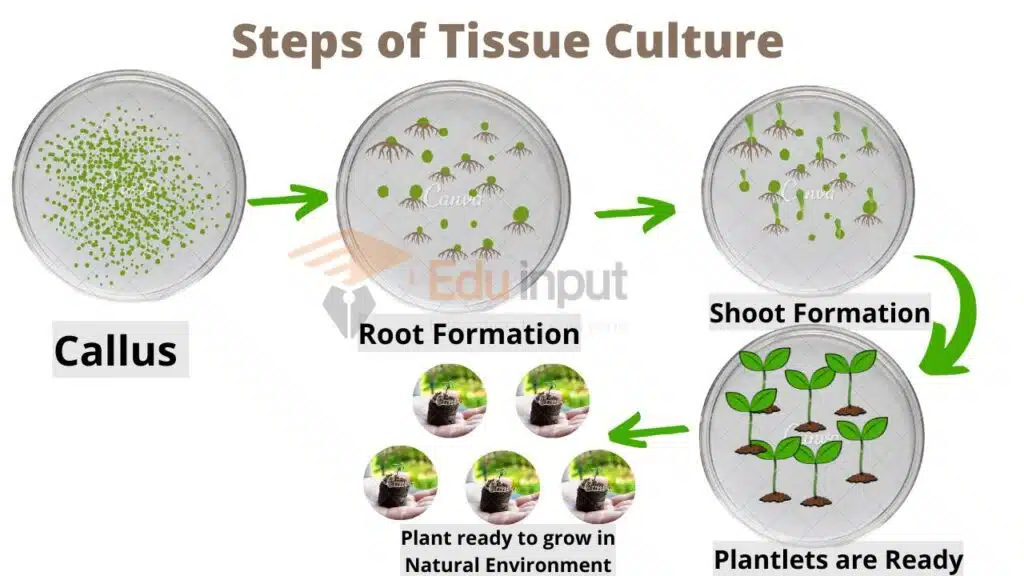What Is Tissue Culture? | Types and Mechanism of Tissue Culture
The growth of tissue in an artificial culture medium is called tissue culture. German botanist Gottlieb Haberland said in 1902 that plant cells are totipotent.
Totipotent
Totipotent means each cell has the full genetic potential of the organism. Therefore a single cell can become a complete plant. Thus tissue culture can be performed in plant cells.

There are different types of tissue culture being performed for propagation. These types are based on where part of the plant is taken from.
1- Seed culture
2- Embryo culture
3- Callus culture
4- Organ culture
5- Protoplast culture
6- Pollen culture
7- Anther culture
8- Single-cell culture
9- Suspension culture
10- Somatic embryogenesis
Mechanism of Tissue Culture:
The following steps are involved in process of Tissue Culturing;
Initiation
In the initiation phase, the tissue to be cultured is added to the culture. The tissue of interest is separated. Sterilization of the tissue is performed to prevent culture from contamination.

Multiplication
The sterilized explant is added into the medium composed of the required nutrients. It contains growth regulators and appropriate nutrients. They play a key role in the multiplication of cells. As a result, several undifferentiated cells are formed. This undifferentiated mass of cells is known as a callus.

Development of root
The growth of roots starts in this stage. Plant growth hormone auxin influences root growth and are added to accelerate the process of root hair formation. As the root is developed, we obtain complete plantlets.
Formation of shoot
The plant growth hormone cytokinin is added for the shoot growth. Cytokinin promotes cell growth and cell division. The growth is observed for a week.

Acclimatization
As plants are developed, they are now transferred to the greenhouse to develop under controlled environmental conditions. After the sometime plant is ready to grow in the natural environment.
Advantages of Tissue Culture:
Following are the various advantages of the tissue culture technique:
1. The plantlets can be obtained in a very short time.
2. A large space is not required to grow plants by tissue culture technique.
3. The production of new varieties in the marketplace speeds up.
4. The newly developed plants are disease-free.
5. The plants can be grown irrespective of the season.
6. This technique is used for the production of ornamental plants such as dahlia, chrysanthemum, orchids, etc.
Related FAQs
What is tissue culture?
The growth of tissue in an artificial culture medium is called tissue culture.
What is totipotency?
Totipotent means each cell has the full genetic potential of the organism. Therefore a single cell can become a complete plant. Thus tissue culture can be performed in plant cells. Thus totipotency refers to the ability of plant to produce new organism from any of its cell.
What is the mechanism of Tissue Culture?
It involves the following steps:
Initiation
Multiplication
Development of root
Formation of shoot
What are the advantages of tissue culture?
Tissue culture has many advantages, some of them are;
1. The plantlets can be obtained in a very short time.
2. A large space is not required to grow plants by tissue culture technique.
3. The production of new varieties in the marketplace speeds up.
4. The newly developed plants are disease-free.






Leave a Reply